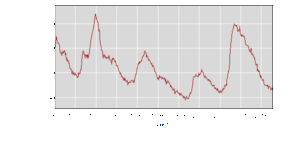My first career type job was as an Unemployment Insurance (UI) Claims Clerk in the Minneapolis Unemployment Office in 1975. The unemployment rate (9%) was over twice what it is now. Back then, claimants reported in person to get their checks. Having talked to thousands of unemployed people, all of us clerks ended up with a better than average understanding of jobs and the flow of the labor market. That was 40 years ago. Times change.

Minneapolis office of MN Employment Services circa 1970s. Now it is the City of Lakes building.
Choose a job you love, and you will never have to work a day in your life. – Confucius.
Sorry Confucius, in the past 10 to 20 years, almost every job has changed. New technology changes things. As the jobs change, the skill set needed to do the jobs change also. Not only did the jobs change but also the mix of jobs is much different than it was. Detailing how things have changed is a fool’s errand. Therefore, this post ignores what has changed and instead focuses on the way it is now. This post is about today’s employment picture.
The Bureau of Labor Statistics (BLS) and the U.S. Census Bureau (Census) publish all sorts of data on employment. They are the source of all data below unless stated otherwise.
Albert Einstein famously said; “If you can’t explain it simply, you don’t understand it well enough.” You are the judge as to if understanding translates into simple explanation.
The employment policy folks categorize the 325 million U.S. population into four groups:
- Under age 16, institutionalized or military = 70.5 million (By definition this group is ignored in labor statistics)
- Employed = 153 million (people who have a job)
- Unemployed = 7 million (able, available and actively seeking work)
- Not in labor force = 94.3 million (everyone not in one of the above categories) – Think: retired, students, home caregivers, ill, discouraged workers, etc.)
The labor force is employed plus unemployed = 160.1 million
The unemployment rate is the unemployed divided by labor force (7 / 160.1) = 4.4%

Source Bureau of Labor Statistics – Unemployment rate for workers age 16 or older 1975 to present. Note during this 42-year period, only January 1999 – April 2001 had an unemployment rate (3.8% – 4.3%) lower than it is now (4.4%.)
About 7 million were unemployed on the day of the snapshot (always the 12th of the month), however, during the duration of the month prior to the snapshot; about 16.2 million people changed their status between “employed”, “unemployed” and “not in labor force”. Officially, called labor force status flow. Unofficially labor churn. The rate of status changes has been stable for a couple years. The pattern has been:
- 26% will find a job before the 12th of the following month.
- 26% will leave the labor force: retire, go to school, care for relative or kids, etc.
- 48% will remain unemployed for the entire month. The median duration of unemployment is currently 10.2 weeks.
According to the BLS, during March 2017 there were 5.3 million new hires and 5.1 million separations (quits, layoffs and discharges, and other separation). When hires exceed separations, employment is increasing. Overall, in the 12 months ending in March 2017 hires have exceeded separations by 6.9 million. However, note that within the overall increase, some occupations increased and others decreased their total employment.
There are three types of unemployment:
- Cyclical unemployment – insufficient demand for labor – More people unemployed than jobs available.
- Structural unemployment – mismatch between “the skills or location of unemployed workers” and “the skills required by, or location of, available jobs.” Structural unemployment can sometimes act like a zero sum game: when the unskilled person does not get the job, another person with skills, does. The net change in number employed or unemployed is zero.
- Frictional unemployment – the time it takes to find a job even when there is sufficient demand for labor. Just between jobs

There is a floor to the unemployment rate (approximately 2.5 – 3.5%) below which it is very tough to go because of frictional unemployment. The hiring process takes time, (apply, interviewed, hired and start new job) thus, there will usually be an average of a couple of weeks of unemployment even when there are far more jobs than applicants for those jobs.
Those affected by structural unemployment tend to be unemployed for a longer duration. Cyclical unemployment is most often a recession or depression.
Employment distribution by occupation
Note that methodology and assumptions are different for the numbers above compared to the methodology and assumptions used for employment distribution. The numbers below exclude proprietors, unincorporated self-employed, unpaid volunteer or family employees, farm employees, domestic employees, and employees of federal security agencies (NSA, CIA, etc.). In addition, there is a difference in the sampling methodology used. However, the pattern is clear.
The number of employed get divided into two categories: Goods producing and Service providing. Detailed totals by sub-categories of occupations are at Current Employment Statistics – CES (National). Here are some high level numbers.
- Goods-producing (19,589,000) 14% of total
- Mining and logging 683,000
- Construction of buildings 1,478,000
- Heavy and civil engineering construction 887,800
- Specialty trade contractors 4,214,200
- Durable goods manufacturing 7,708,000
- Nondurable goods 4,618,000
- Service-providing (125,364,000) 86% of total
- Wholesale trade 5,878,800
- Retail trade 15,618,500
- Transportation and warehousing 4,986,500
- Utilities 553,300
- Information 2,734,000
- Financial activities 8,356,000
- Professional and business services 20,339,000
- Education and health services 23,113,000
- Leisure and hospitality 15,397,000
- Other services 5,696,000
- Federal government 2,797,000
- Postal service 615,600
- State government 5,249,000
- Local government 14,646,000
Obviously, with 86% of jobs being in the service providing category we are in a service economy. Note the 14% goods producing category is 8.6% manufacturing and only 5.4% is construction and mining. Blue-collar work has become a relatively small portion of the total number of jobs.
SO WHAT DOES ALL OF THE ABOVE DATA MEAN?
96.4% of people who want a job have one. Over half of the remaining 4.4% of the labor force will either be employed or not in the labor force within a month.
The 153 million employed people are in a wide variety of jobs. The jobs base is wide and diversified. This broad base of jobs means opportunities in other sectors can offset another sectors decline. Each month 16.2 million (10%) of the labor force has a change their labor force status. Employees flow between employment sectors. As retail stores closes, most of the effected employees find new jobs, often before the actual store closure. When the fortune 500 company announces a workforce reduction, attrition handles most of the reduction. Workers are going to where needed and leaving where they are not.
There are more new hires than there are employees separated from employment. The employee in training that took my order at the coffee shop the other day had re-entered the labor force after a year of retirement. She said she missed interacting with people and could use the extra money.
Baby boomers are leaving the labor force and low fertility rates are not fully replacing them. Even with immigration, the labor force will be growing very slowly until 2024. Technology and changes in demand will continue to reshape the jobs picture. As jobs changed, the workers adapted. As the job-mix changed, the workers adapted.
Confucius was wise but the jobs are different and likely to continue to change. It is what it is. Most people have already embraced it. If you have not yet done so, my advice for all is to get your technology skill sets up to date. If you have the opportunity to learn new technology, do it. The biggest shock when I did the research for this post was that most employment sectors had already adjusted to new technology. Blue-collar does not mean done without technology. Agriculture does not mean done without technology. Oil drilling does not mean done without technology.

We heard great stories at the head of the unemployment line. The best ones were from a smiling face, telling us they start a new job next week and that it feels like a good fit.